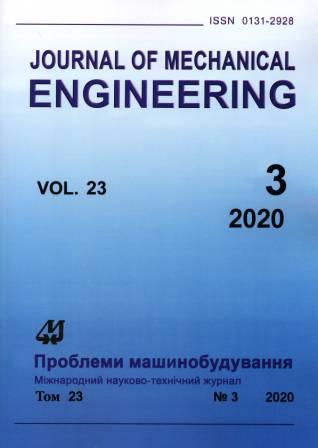Using the R-Functions Theory Apparatus to Mathematically Model the Surface of the Soyuz-Appolo Spacecraft Mock-up for 3D Printing
Keywords:
R-functions, alphabetic parameters, standard primitives, Soyuz-Apollo spacecraft modelAbstract
Creation of mathematical models of objects to be 3D printed is of considerable interest, which is associated with the active introduction of 3D printing in various industries. The advantages of using modern 3D printers are: lower production costs and shorter periods of time for their appearance on the market, modeling objects of any shape and complexity, speed and high precision of manufacturing, their ability to use various materials. One of the methods for solving the problem of creating a mathematical and computer model of the object being designed is the application of the R-functions theory, with the help of which it is possible to describe geometric objects of complex shapes in a single analytical expression. The use of alphabetic parameters, when one specifies geometric information in analytical form, allows one to quickly change the size and shape of the object being designed, which helps to spend less time on building computational models. The proposed method can significantly reduce the complexity of work in CAD systems in those cases when one needs to view a large number of design options in search of an optimal solution. This gives a great effect on reducing labor intensity in the construction of computational models to determine aero-gas-dynamic and strength characteristics. Characterization is also often associated with the need to account for changes in aircraft shape. This leads to the fact that the determination of aerodynamic characteristics only due to the need to build a large number of computational models increases the duration of work by months. With parametric assignments, computational regions change almost instantly. In this paper, on the basis of the basic apparatus of the theory of R-functions as well as cylindrical, spherical, ellipsoidal, and conusoidal support functions, a multiparametric equation for the surface of a Soyuz-Apollo spacecraft model is constructed. A number of support functions were normalized according to a general formula, which made it possible to illustrate a new approach to constructing three-dimensional equations for surfaces of a given thickness.References
(2020). 3D-printer budet "pechatat'" detali pryamo v kosmose [The 3D printer will "print" parts right in space.]. Nano News Net: Official site, 2020. URL: http://www.nanonewsnet.ru/news/2011/3d-printer-budet-pechatat-detali-pryamo-v-kosmose.
Sheyko, T., Maksymenko-Sheyko, K., Sirenko, V., Morozova, A., & Petrova, R. (2019). Analytical identification of the unmanned aerial vehicles’ surfaces for the implementation at a 3D printer. Eastern-European Journal of Enterprise Technologies, vol. 1, no. 2 (97), pp. 48–56. https://doi.org/10.15587/1729-4061.2019.155548.
Sheyko, T. I., Maksimenko-Sheyko, K. V., Tolok, A. V., & Morozova, A. I. (2019). Matematicheskoye i kompyuternoye modelirovaniye aerokosmicheskikh obyektov dlya realizatsii tekhnologii 3D-pechati [Mathematical and computer modeling of aerospace objects for the implementation of 3D printing technology]. Informatsionnyye tekhnologii v proyektirovanii i proizvodstve – Information technology of CAD/CAM/CAE, iss. 2 (174), pp. 16–20 (in Russian).
Rvachev, V. L. (1982). Teoriya R-funktsiy i nekotoryye yeye prilozheniya [R-functions theory and some of its applications]. Kiyev: Naukova dumka, 552 p. (in Russian).
Rvachev, V. L. & Sheiko, T. I. (1995). R-functions in boundary value problems in mechanics. Applied Mechanics Reviews, vol. 48, no. 4, pp. 151–188. https://doi.org/10.1115/1.3005099.
Maksimenko-Sheyko, K. V. (2009). R-funktsii v matematicheskom modelirovanii geometricheskikh obyektov i fizicheskikh poley [R-functions in mathematical modeling of geometric objects and physical fields].Kharkov: IPMashNAN Ukrainy, 306 p. (in Russian).
Downloads
Published
Issue
Section
License
Copyright (c) 2020 Tetiana I. Sheiko, Kyrylo V. Maksymenko-Sheiko, Anna I. Morozova

This work is licensed under a Creative Commons Attribution-NoDerivatives 4.0 International License.
All authors agree with the following conditions:
- The authors reserve the right to claim authorship of their work and transfer to the journal the right of first publication of the work under the license agreement (the agreement).
- Authors have a right to conclude independently additional agreement on non-exclusive spreading the work in the form in which it was published by the jpurnal (for example, to place the work in institution repository or to publish as a part of a monograph), providing a link to the first publication of the work in this journal.
- Journal policy allows authors to place the manuscript in the Internet (for example, in the institution repository or on a personal web sites) both before its submission to the editorial board and during its editorial processing, as this ensures the productive scientific discussion and impact positively on the efficiency and dynamics of citation of published work (see The Effect of Open Access).

